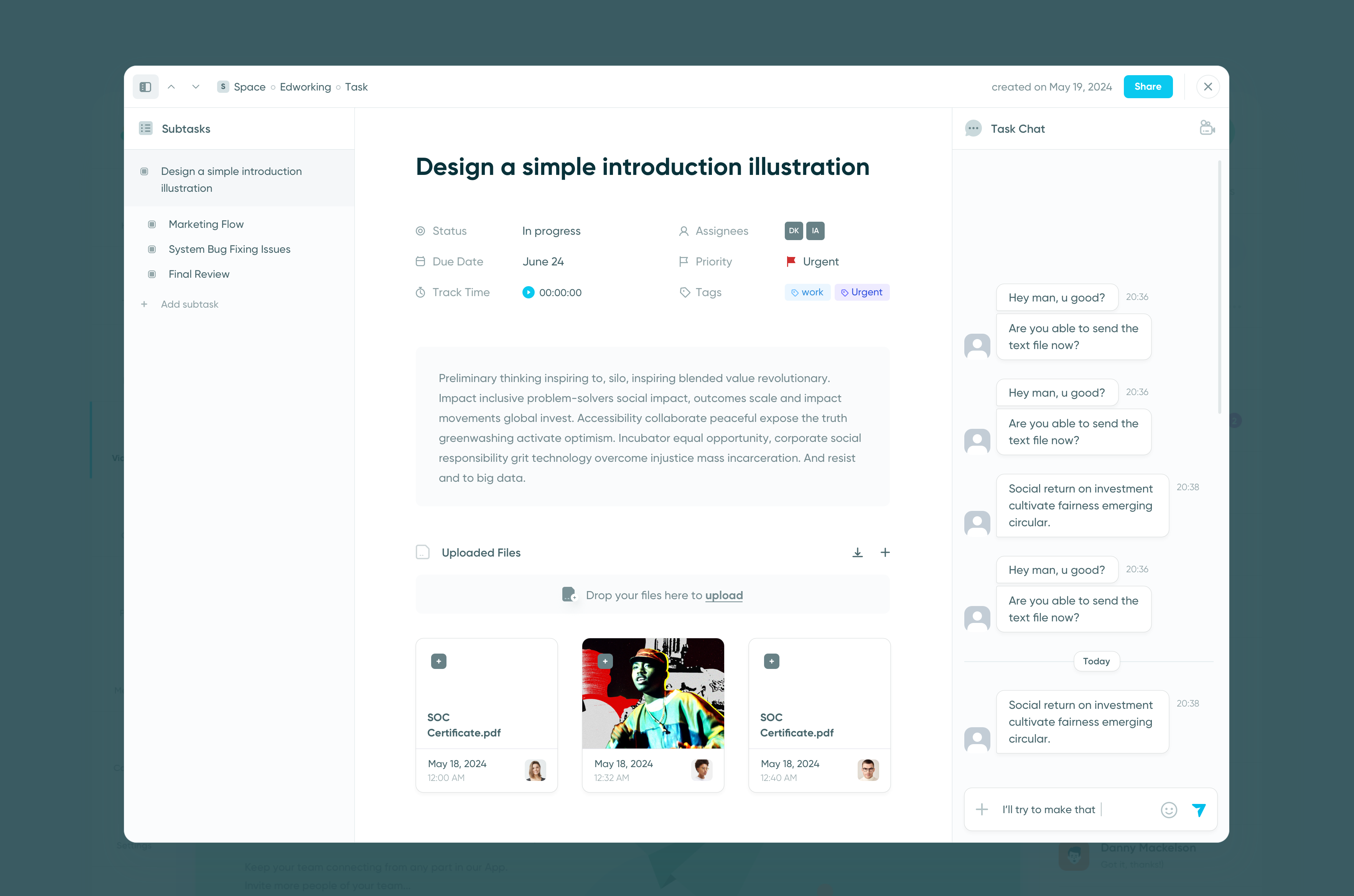Building a positive company culture in 2025 is more critical than ever. As businesses navigate a rapidly changing landscape, the importance of fostering a supportive, engaging, and inclusive work environment cannot be overstated. A robust company culture not only enhances employee satisfaction and productivity but also drives innovation and long-term success.
In this article, we'll delve into the essence of a positive company culture, explore effective strategies to cultivate it, and discuss how to sustain these practices over time. Let's embark on this journey to understand how you can transform your workplace into a thriving hub of positivity and growth.
 Understanding Positive Company Culture
Understanding Positive Company Culture
A positive company culture is the heartbeat of an organization. It encompasses the shared beliefs, values, and practices that shape the work environment and influence how employees interact with each other and the outside world. In essence, it’s the personality of the company.
Why is this so important? Well, a positive company culture has been shown to significantly impact employee morale, productivity, and retention. When people feel valued and aligned with their company’s mission, they are more likely to go the extra mile. Moreover, a strong culture attracts top talent, enhances brand reputation, and ultimately drives business success.
Key Elements of Positive Company Culture

Shared Vision and Values
At the core of any thriving company culture is a shared vision and set of values. These act as a guiding star for all organizational activities. When everyone in the company understands and believes in the mission, it fosters unity and a sense of purpose. This alignment not only helps in decision-making but also ensures that everyone is working towards the same goals.
To build a shared vision and values:
- Clearly articulate the company's mission, vision, and values.
- Ensure that these are consistently communicated and demonstrated by leadership.
- Involve employees in defining and refining these values to foster ownership and commitment.
Employee Recognition and Appreciation
Recognition and appreciation are powerful tools for boosting employee morale and motivation. When employees feel that their efforts are acknowledged, they are more likely to remain engaged and productive. Simple gestures like a thank-you note or public acknowledgment can go a long way.
Effective recognition strategies include:
- Implementing formal recognition programs such as "Employee of the Month."
- Encouraging peer-to-peer recognition to build a supportive work community.
- Offering meaningful rewards that resonate with employees’ preferences and values.
Open Communication and Feedback
Open communication is the lifeblood of a positive company culture. It involves creating an environment where employees feel safe to express their ideas, concerns, and feedback without fear of retribution. This transparency builds trust and fosters a collaborative atmosphere.
Key practices for open communication include:
- Regular team meetings and one-on-one check-ins to maintain open lines of communication.
- Providing multiple channels for feedback, such as surveys and suggestion boxes.
- Encouraging managers to be approachable and receptive to employee input.
Understanding these foundational elements sets the stage for implementing strategies that will further enhance and sustain a positive company culture. Next, we’ll explore practical approaches to embedding these elements into the fabric of your organization.
 Strategies to Build a Positive Company Culture
Strategies to Build a Positive Company Culture
Leadership and Management

Leading by Example
Leaders play a crucial role in shaping and nurturing a positive company culture. When leaders embody the company’s values and vision, they set a powerful example for employees to follow. It's essential for leaders to demonstrate integrity, empathy, and commitment in their daily actions.
To lead by example:
- Consistently uphold the company's values in decision-making and interactions.
- Show genuine interest and care for employees' well-being.
- Be approachable and open to feedback, fostering a culture of trust and respect.
Transparent Decision-Making
Transparency in decision-making is key to building trust within the organization. When employees understand the reasons behind decisions, they are more likely to feel included and valued. This openness reduces uncertainty and promotes a collaborative work environment.
Implementing transparent decision-making involves:
- Communicating the rationale behind major decisions and changes.
- Involving employees in the decision-making process where possible.
- Providing regular updates on company performance and future plans.
Employee Engagement
Team Building Activities
Team building activities are essential for creating a cohesive and supportive work environment. These activities help to break down silos, improve communication, and build trust among team members. They can be both fun and productive, enhancing the overall workplace atmosphere.
Effective team-building strategies include:
- Organizing regular social events and team outings.
- Encouraging collaborative projects and cross-functional teams.
- Incorporating icebreaker activities and games into meetings.
Professional Development Opportunities
Investing in employees’ professional growth is a powerful way to foster engagement and loyalty. When employees see a clear path for career advancement, they are more likely to stay motivated and committed to the company.
To promote professional development:
- Offer training programs, workshops, and courses relevant to employees' roles.
- Provide mentorship and coaching to support career growth.
- Encourage continuous learning and skill development.
Work Environment


Inclusive Workplace
Creating an inclusive workplace where everyone feels valued and respected is fundamental to a positive company culture. Inclusion involves recognizing and celebrating diversity, ensuring that all employees have equal opportunities and a sense of belonging.
Building an inclusive workplace includes:
- Implementing diversity and inclusion training programs.
- Promoting diverse hiring practices to build a varied workforce.
- Creating employee resource groups to support underrepresented communities.
Flexible Work Arrangements
Flexible work arrangements are increasingly important in today’s dynamic work environment. Offering flexibility in where, when, and how employees work can significantly enhance job satisfaction and productivity.
Examples of flexible work arrangements:
- Allowing remote work or hybrid work models.
- Offering flexible hours or compressed workweeks.
- Providing opportunities for job sharing and part-time work.
Healthy Work-Life Balance
A healthy work-life balance is critical for maintaining employee well-being and preventing burnout. When employees feel that they can balance their professional and personal lives, they are more likely to be productive and engaged at work.
Promoting work-life balance involves:
- Encouraging regular breaks and time off to recharge.
- Implementing policies that prevent excessive overtime.
- Supporting employees in managing their workload and setting realistic expectations.
By implementing these strategies, companies can create a positive and thriving culture that benefits both employees and the organization as a whole. Next, we’ll discuss how to implement and sustain these cultural changes over the long term.
 Implementing and Sustaining Positive Company Culture
Implementing and Sustaining Positive Company Culture
Measuring Success
Employee Surveys
Employee surveys are an invaluable tool for gauging the health of your company culture. Regularly collecting feedback from employees allows you to understand their experiences, identify areas for improvement, and track progress over time.

To effectively use employee surveys:
- Design surveys that cover various aspects of company culture, including job satisfaction, work environment, and leadership.
- Ensure anonymity to encourage honest feedback.
- Share the results with the entire organization and outline action plans based on the feedback received.
Performance Metrics
Performance metrics provide a quantitative measure of how well your cultural initiatives are working. By tracking specific indicators, you can determine the impact of your efforts and make data-driven decisions to enhance your culture.
Key performance metrics to monitor include:
- Employee turnover rates: High turnover can indicate cultural issues that need addressing.
- Engagement scores: Use tools like engagement surveys to measure overall employee satisfaction.
- Productivity levels: Assess how cultural changes are influencing productivity and efficiency.
Adapting to Changes
Continuous Improvement
A positive company culture is not static; it requires ongoing attention and refinement. Committing to continuous improvement ensures that your culture evolves with the needs of your employees and the demands of the business environment.
Strategies for continuous improvement:
- Regularly review and update your cultural initiatives based on feedback and performance metrics.
- Encourage a culture of innovation where employees feel empowered to suggest improvements.
- Recognize and celebrate small wins to maintain momentum and motivation.
Staying Current with Trends
Staying informed about the latest trends in workplace culture helps you keep your strategies relevant and effective. As the world of work evolves, so too should your approach to building and sustaining a positive culture.
To stay current with trends:
- Follow industry publications and thought leaders to keep up with new ideas and best practices.
- Attend conferences, webinars, and workshops focused on company culture and employee engagement.
- Network with other professionals to share experiences and learn from their successes and challenges.
By measuring success and adapting to changes, you can ensure that your efforts to build a positive company culture are effective and sustainable. This commitment to continuous improvement and staying current with trends will help your organization thrive in the dynamic landscape of 2025 and beyond.
 Edworking's Role in Enhancing Company Culture
Edworking's Role in Enhancing Company Culture
Edworking is a comprehensive platform designed to support businesses in creating and maintaining a positive company culture. It offers a suite of tools aimed at improving communication, collaboration, and overall employee engagement. Key features of Edworking include:

- Communication Tools: Facilitate seamless communication across teams with chat, video conferencing, and discussion forums.
- Project Management: Streamline workflows and keep everyone on the same page with task tracking, project timelines, and collaborative workspaces.
- Recognition and Rewards: Implement recognition programs to celebrate employee achievements and boost morale.
- Professional Development: Access to training modules and resources that support continuous learning and career growth.
- Feedback Systems: Tools for conducting employee surveys and gathering feedback to drive improvements.
Potential Benefits and Use Cases
Edworking provides several benefits that can significantly enhance your company culture:
- Improved Communication: By offering multiple channels for communication, Edworking ensures that employees can easily connect and collaborate, fostering a sense of community and teamwork.
- Enhanced Engagement: Features like recognition and rewards help keep employees motivated and engaged, reinforcing their value within the organization.
- Streamlined Workflows: The project management tools help maintain organization and efficiency, reducing stress and enabling employees to focus on their tasks.
- Continuous Learning: With access to professional development resources, employees can continually upgrade their skills, leading to greater job satisfaction and retention.
- Actionable Feedback: The feedback systems provide valuable insights into employee sentiment, allowing for timely interventions and improvements.

Use Cases
- Remote and Hybrid Teams: Edworking's communication and collaboration tools are particularly beneficial for remote or hybrid teams, ensuring everyone stays connected and engaged regardless of their location.
- Growing Companies: For businesses experiencing growth, Edworking helps maintain a cohesive culture by providing structure and support for new and existing employees.
- Project-Driven Work: Companies that rely heavily on project-based work can benefit from Edworking's project management features, ensuring all team members are aligned and working efficiently.
By integrating Edworking into your organization, you can create a more connected, motivated, and productive workforce, ultimately enhancing your company culture. For more information and to explore Edworking’s tools, you can check out their offerings at Edworking's free AI Writing and Social media tools.
 Conclusion
Conclusion
Building a positive company culture in 2025 requires intentional effort and a commitment to continuous improvement. By understanding the key elements of a positive culture and implementing strategies that promote leadership by example, transparent decision-making, employee engagement, and a supportive work environment, you can create a thriving workplace where employees feel valued and motivated.
Measuring the success of your initiatives through employee surveys and performance metrics, and staying adaptable to changes by continuously improving and keeping up with trends, ensures that your culture remains vibrant and relevant. Integrating tools like Edworking can further enhance your efforts by providing comprehensive solutions for communication, collaboration, and employee engagement.
Ultimately, a positive company culture not only benefits employees but also drives business success, attracting top talent and fostering innovation. As you embark on this journey, remember that creating a positive culture is an ongoing process that evolves with your organization. Stay committed, involve your team, and celebrate your achievements along the way.
By prioritizing a positive company culture, you are investing in the heart of your organization, ensuring a brighter, more successful future for all.





